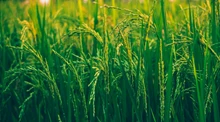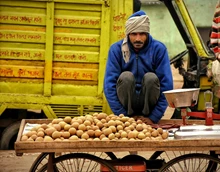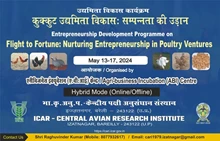
A group of farmers near Lucknow have successfully grown indigo using 70% less water than usual. The crop, also known as "blue gold," is primarily grown in several southern states and West Bengal. Experts believe that the new model is sustainable, replicable, and environmentally friendly because it uses less water and organic manuring.
The farmers' group, led by Ram Khilawan, believes that indigo has the potential to become a new cash crop in the region. According to Ram Khilawan, most farmers in central UP grow mint in addition to rice and sugarcane due to its high demand in the beauty, ayurvedic, and food industries.
"Crop farming is a win-win situation for farmers. However, because the economics of the process are frequently a deciding factor, earnings per acre from indigo are twice that of mint,” he continued.
Farmers can harvest an indigo crop twice a year, according to agricultural experts. Indigo requires very little fertilizer and is not eaten by stray cattle. This eliminates the possibility of harvest loss. If the indigo produced by the farmers in the area is purchased at a reasonable price, the crop will be more beneficial to them than any other traditional cash crop, as per Dharmendra Kumar Gupta, Indian Council of Agricultural Research (ICAR).
According to him, Indigo roots have nodules that contain nitrogen-fixing bacteria, which improves soil fertility. "Farmers can capitalize on this aspect of Indigo by growing it alongside traditional crops on their farms," Gupta adds.
According to the official, another advantage of indigo cultivation is that farmers can sell it directly to buyers. "Farmers harvest the plant shoot and transport it to a refinery to extract the oil in peppermint cultivation. The oil extracted is then sold to traders,” he claims.
Farmers sell the entire plant to indigo producers after cutting it a few centimetres above the root. The whole shoot is used to extract the dye, which is then concentrated and dried before being sold.
Stay tuned with Krishi Jagran for more Agri News!!











